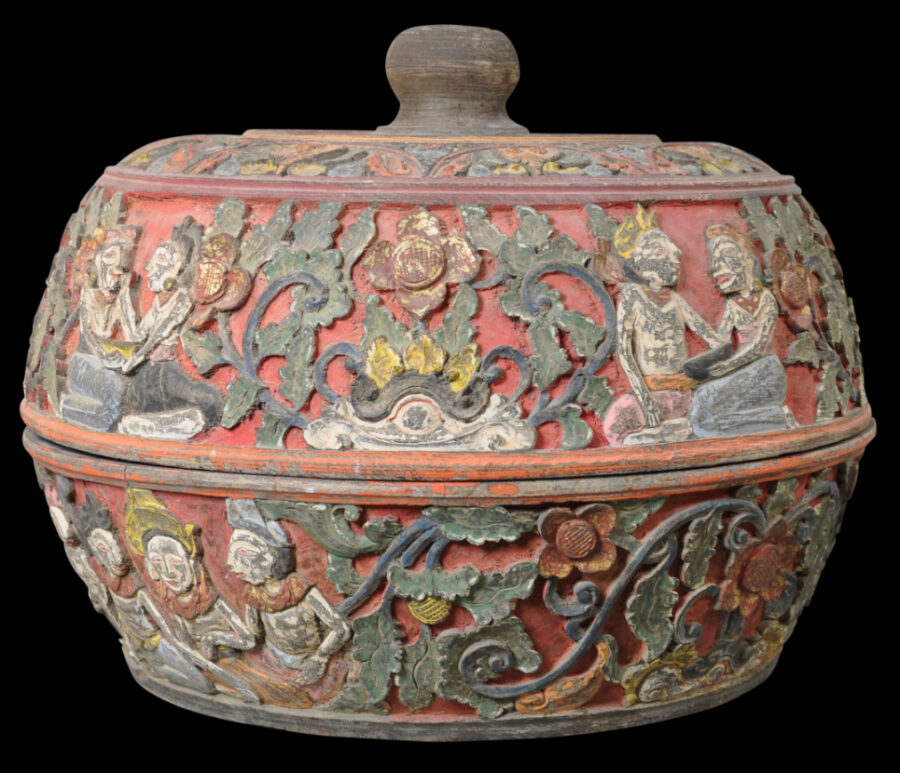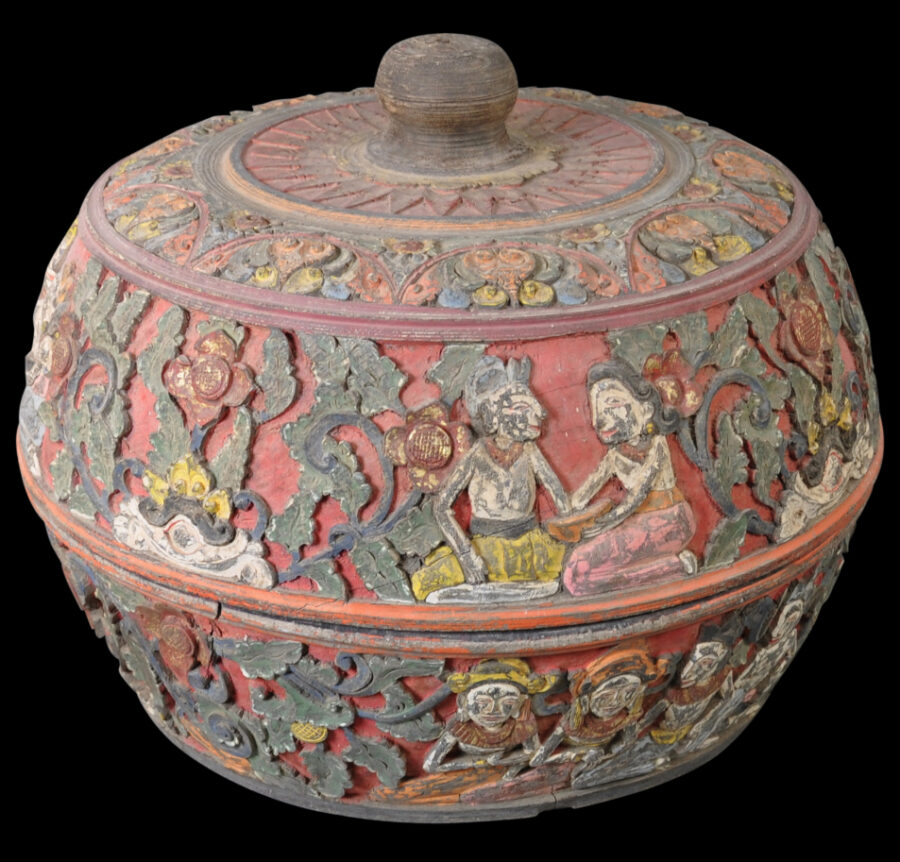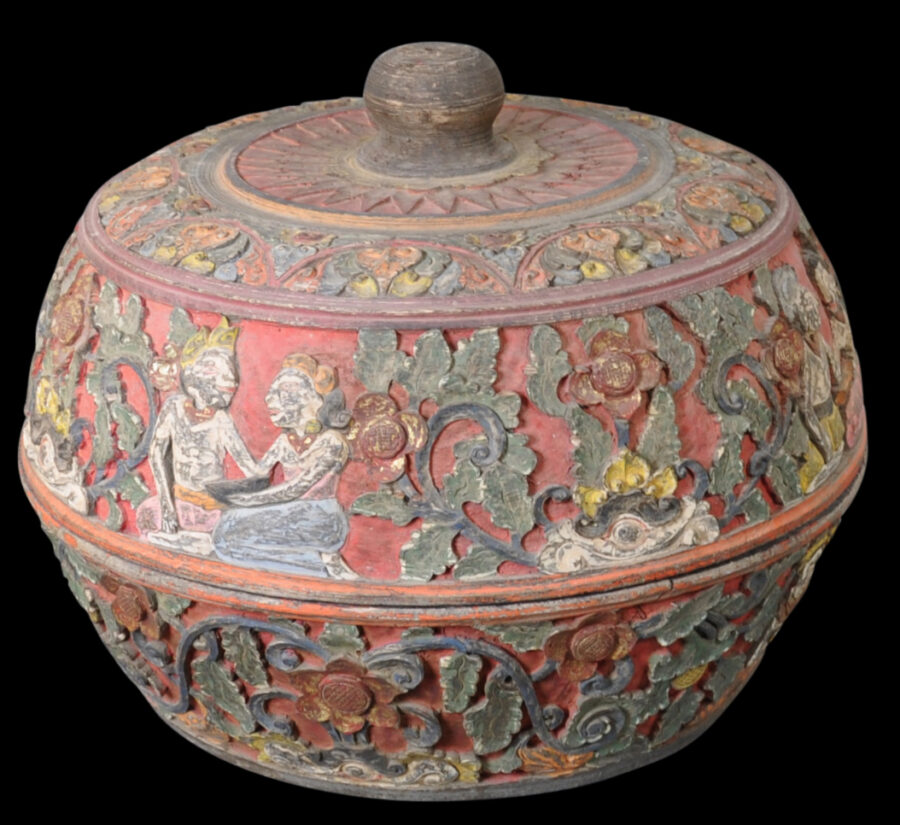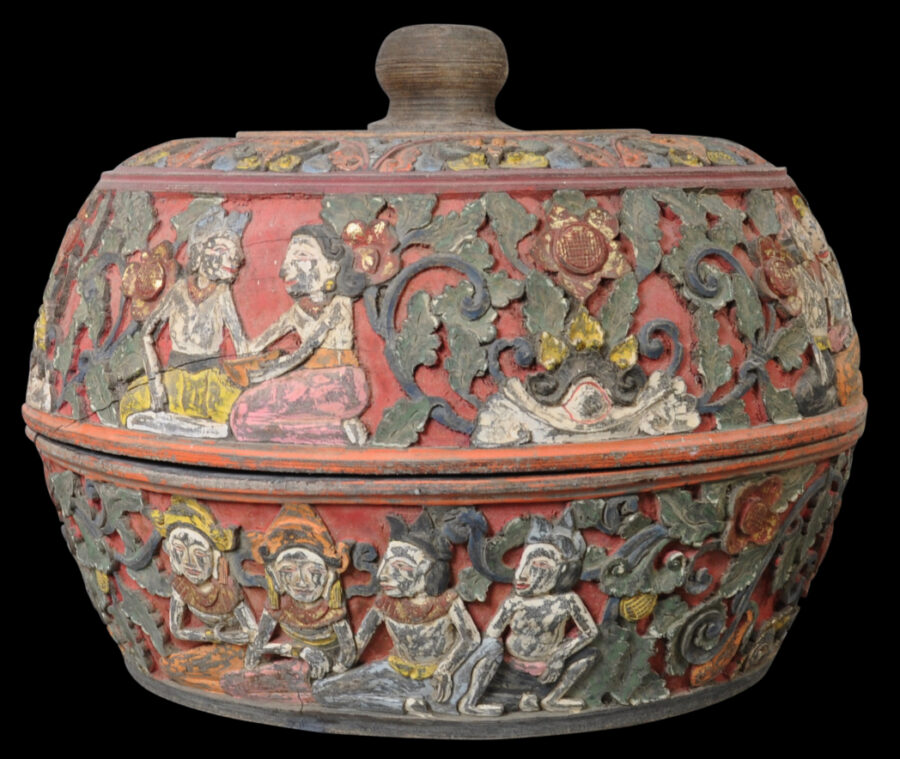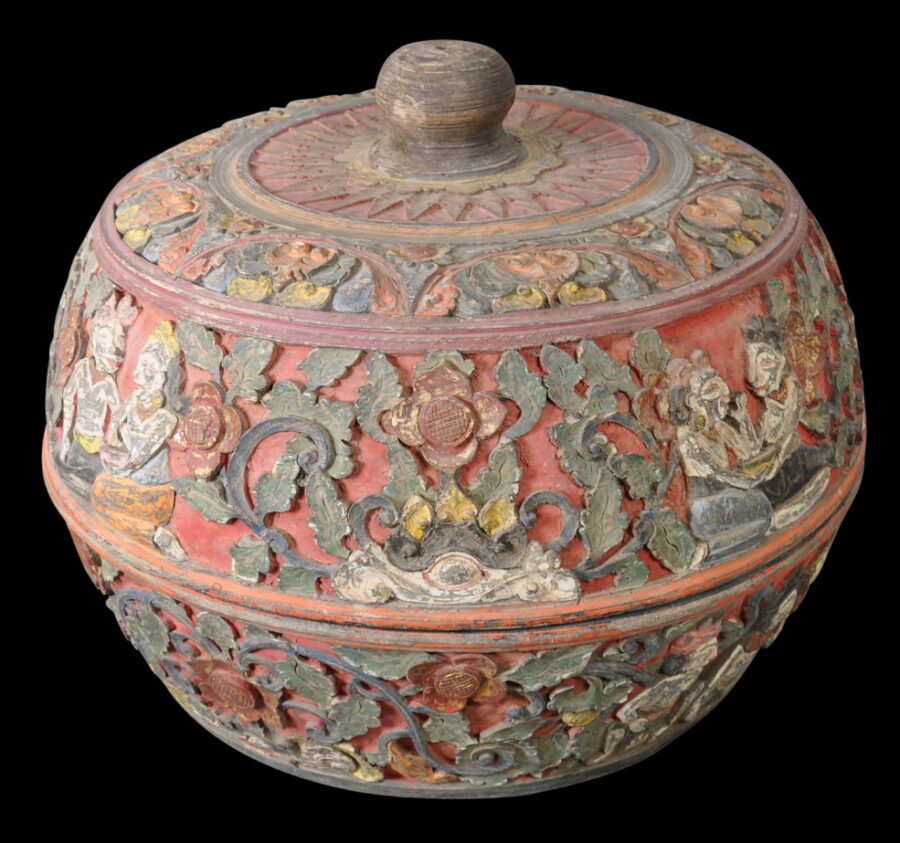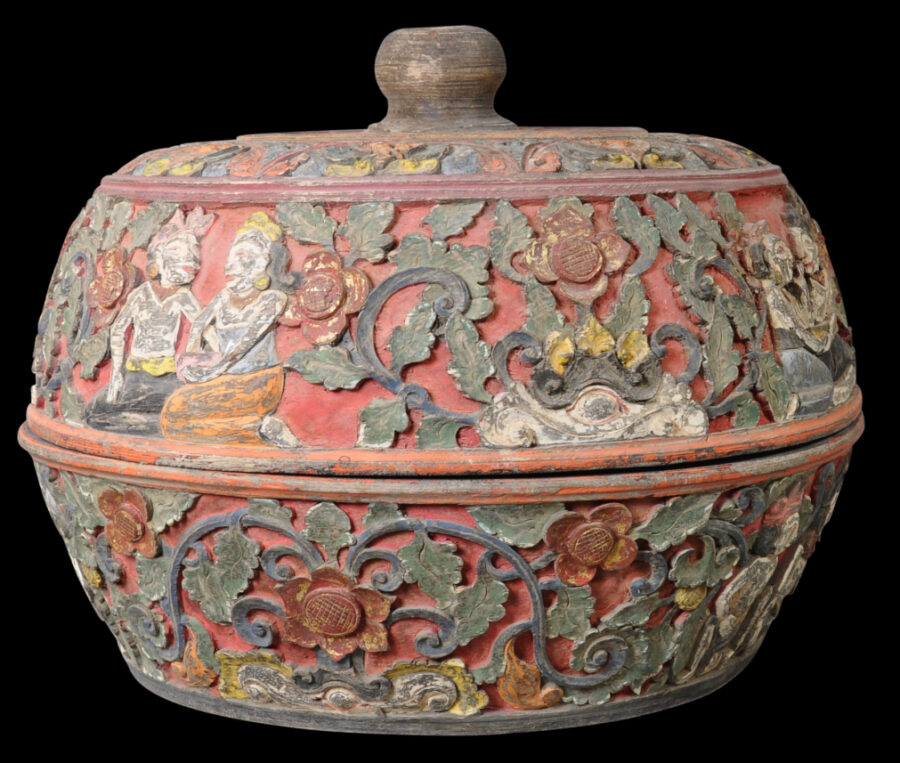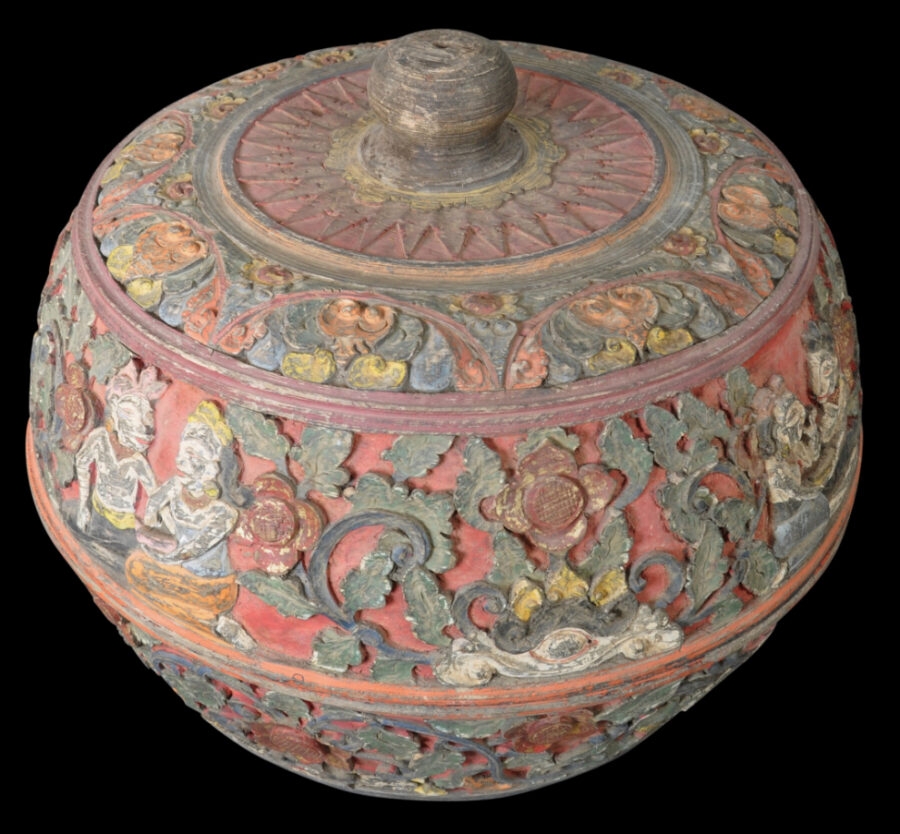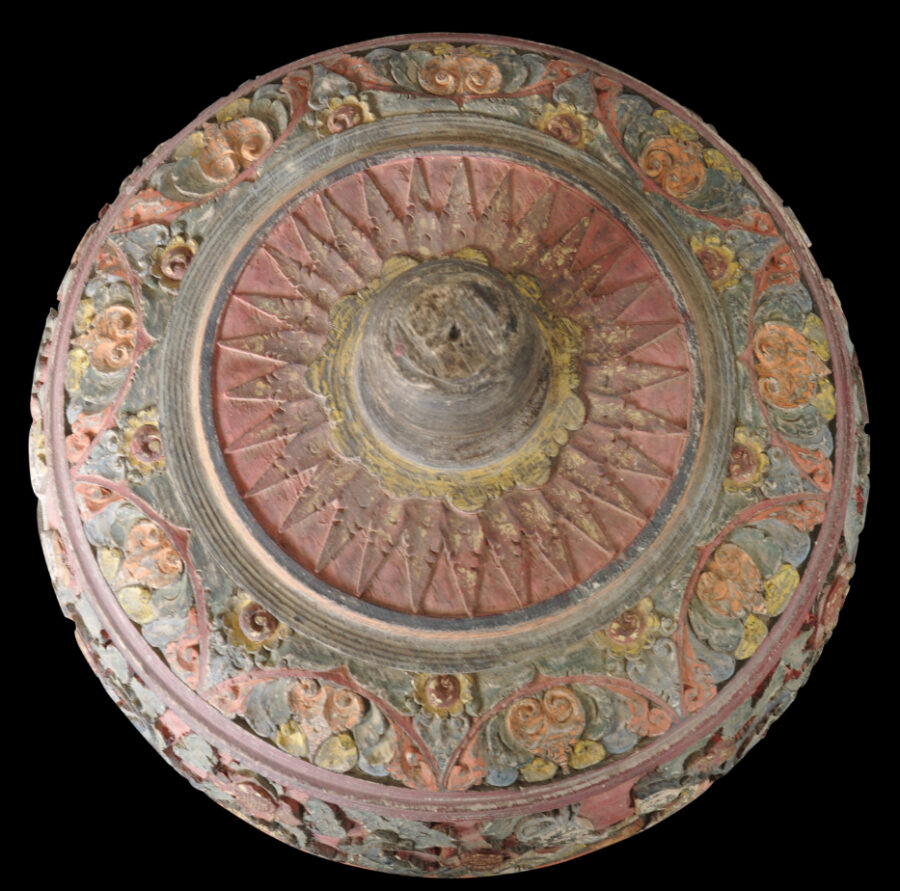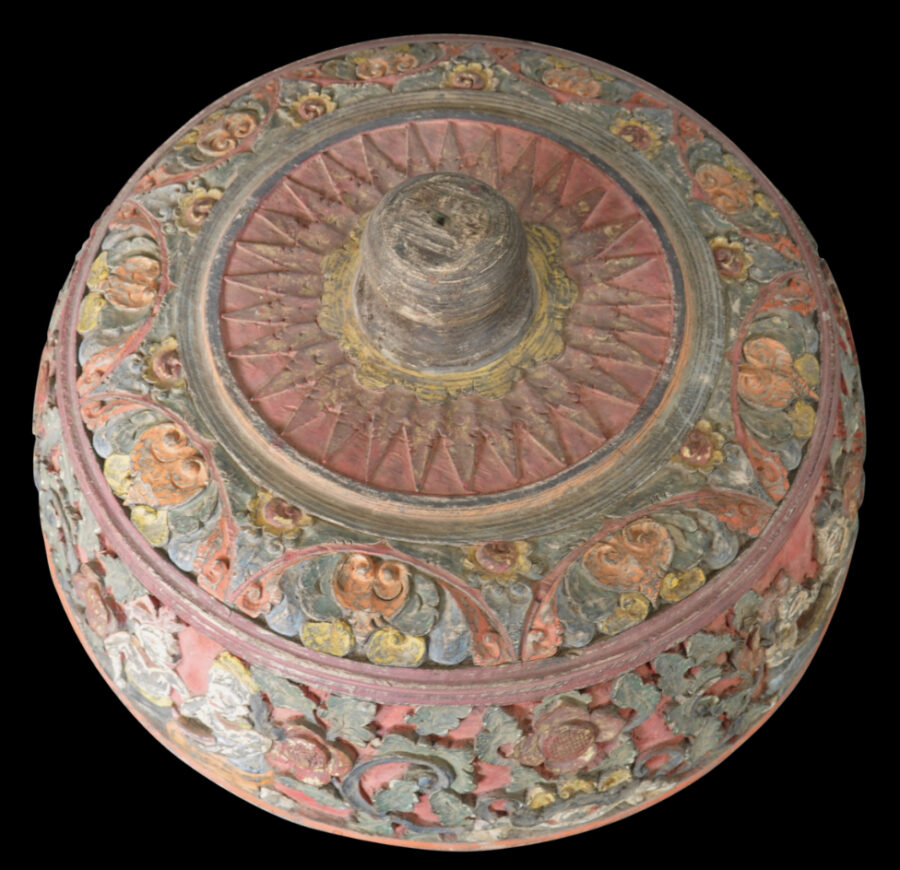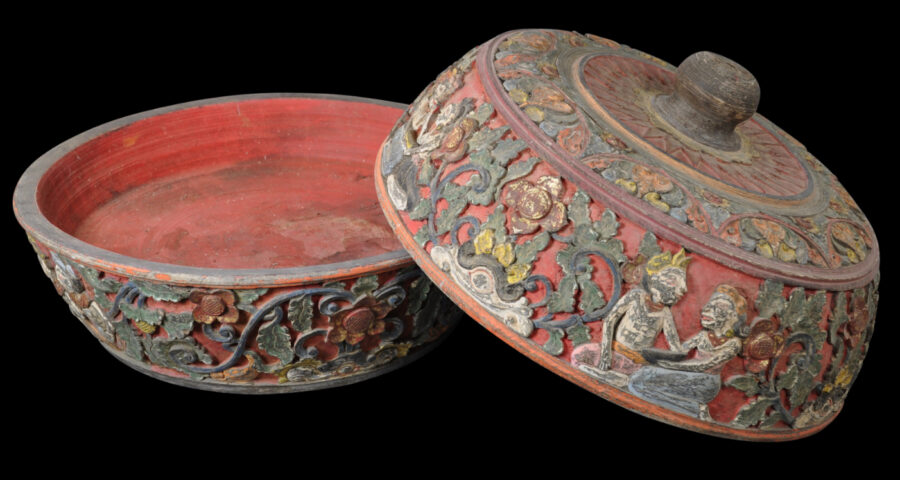This large dish and cover was used to present sajen or offerings at a Balinese Hindu temple. The sides of the bowl and cover are decorated in high relief with Balinese scenes and decorated in muted polychrome pigments and traces of gold leaf against a coral-red ground.
Both the bowl and cover are decorated with what the Balinese called the patera cina motif – which features scrolling stems with serrated leaves and daisy-like flowers with cross-hatched centres – and pairs and a group of Balinese some of whom are holding dishes, perhaps dishes to make offerings.
Probably the patera cina motif is based on the chrysanthemum flower motif of the Chinese. (Chinese traders and settlers had a significant impact on Balinese culture, particularly in north Bali where there were significant Chinese commercial minorities in the larger trading seaports.)
The interior of the bowl and the cover are decorated in coral-red.
The making of offerings was an ever-present obligation in the Balinese version of Hinduism. Offerings were made everyday and on temple days, large and complex offerings were made. The constant need to make offerings meant that a large variety of vessels were produced for the various types of offerings.
The age and size of the bowl suggest that it is likely that it came to the UK during the age of steamship travel. The emergence of steam travel between Asia and Europe occurred around 1870. Steamships were bigger and faster and had much greater capacity to carry cargo. It is around this time onwards (until the advent of air passenger travel) that passengers suddenly were able to bring large items back to Europe collected on their travels. The opening of the Suez Canal on 1869 further encouraged this trend which allowed travel by steamship to be faster and cheaper.
The bowl is in fine condition for its age and size. There are minor chips to the lower base and some shrinkage related cracks. But overall, it is a fine, rare and old piece.
References
Baird, C., ‘Captain Thomson’s letter: A discussion on ‘China Trade’ furniture with particular reference to the port of Singapore’, Furniture History, Vol. 45, 2009.
Genscher, H.D., & M. Kusumaatmadja, Java und Bali, Verlag Philipp von Zabern, 1980.
Ibbitson Jessup, H., Court Arts of Indonesia, The Asia Society Galleries/Harry N. Abrams, 1990.
Maxwell, R. et al, Bali: Island of the Gods, National Gallery of Australia, 2014.
Ramseyer, U., The Art and Culture of Bali, Oxford University Press, 1977.
Reichle, N. (ed.),Bali: Art, Ritual & Performance, Asian Art Museum, 2010.


